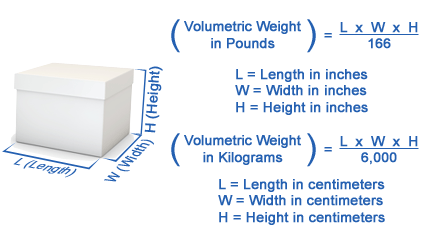Dimensional Weight–Keeping Costs Under Wraps

Have you seen a spike in shipping costs over the past year? Here are some Dimensional Weight quick tips to gain immediate cost savings.
By now, you’ve probably heard that as of January 2015, both UPS and FedEx are using dimensional weight (DIM Weight) pricing for all ground shipments. Due to these new dimensional weight pricing rules, shipping costs for these carriers are now charged based on the volume of a package in relation to its weight. This means that the cost for shipping large, lightweight products will be much higher in 2015 and going forward.
Free Guide: Top Order Fulfillment KPI Indicators
How do you define dimensional weight?
Dimensional weight is calculated when the size of a package is used to determine the weight at which it’s rated. The length, width and height of the box are multiplied together and divided by a dimensional factor (the factor is a fixed number set by the carrier) to determine the dimensional weight.
The calculated dimensional weight is then compared to the actual weight of the package. The higher of the two is used to determine the base rate for that shipment.

Tips To Identify Savings
So, what can you do to save cost on shipping as a result of changes like this from FedEx and UPS?
- Review the sizes and weights of the products you ship and the container size you use to ship them in, especially those that are large and lightweight. Then see if dimensional weight will trump the actual weight for those packages to test what kind of impact you might experience.
- Look at fuel surcharges. Fuel surcharges are calculated off the base rate, so if your base rate is higher due to DIM weight rating, your fuel surcharge will be higher too.
- Once you figure out how much DIM weight rating might affect your shipping costs, take some time to see if the new, lower USPS Priority Mail rates would be a less expensive option for you and your ecommerce business.
- Closely examine the containers you’re using to ship your items in. Many of your items may be able to be shipped in bags vs. rigid containers. However, bags are still subject to the new DIM weight process. Seek “right size” packaging solutions that will reduce shipping and material cost.
- Consider cartonization software to determine the optimal package size based on dimensions, weight, and fragileness and other components of the item being shipped.
The Takeaway
In an ideal order fulfillment center DIM Weight solutions are driven by an optimized and properly engineered Warehouse Control System (WCS).
Operating in real time, a WCS should be able to provide flexibility to include a suite of modules for order release, work balancing, waving, cartonization, picking technology management; such as Voice Picking or Pick-to-Light, Print-And-Apply, In Motion Manifesting, and Packaging & Shipping Automation.
While managing all these processes, the WCS needs to support the service level your customer is expecting while supplying the most cost-effective solution by leveraging all the assets and people in your fulfillment operation fluidly.
Some Frequently Asked Questions:
Q. Are my UPS and FedEx ground packages being charged the DIM weight?
A. Yes, the invoices have definitely changed to show this new calculation and which packages are subject to the higher DIM weight.
Q. Are FedEx SmartPost and UPS SurePost services also subject to DIM?
A. Currently, only UPS is using DIM weight pricing for SurePost. FedEx is not, yet, using DIM for SmartPost packages.
Q. Are returns also subject to DIM (dimensional weight pricing)?
A. Yes, return shipping is handled in the same way for UPS and FedEx ground services.
Q. What about soft packaging or poly bags? Are these being charged by DIM calculation?
A. Well, this is a tricky one. Some are and some are not. For the best answer, we’ll need to do an analysis of your shipping invoices and program to determine what is happening in your situation.
If you have any more questions about Dimensional Weight, contact Conveyco to help optimize your future packaging automation and shipping operations.
Editor’s Note: This post was originally published in September 2015 and has been updated for comprehensiveness.





